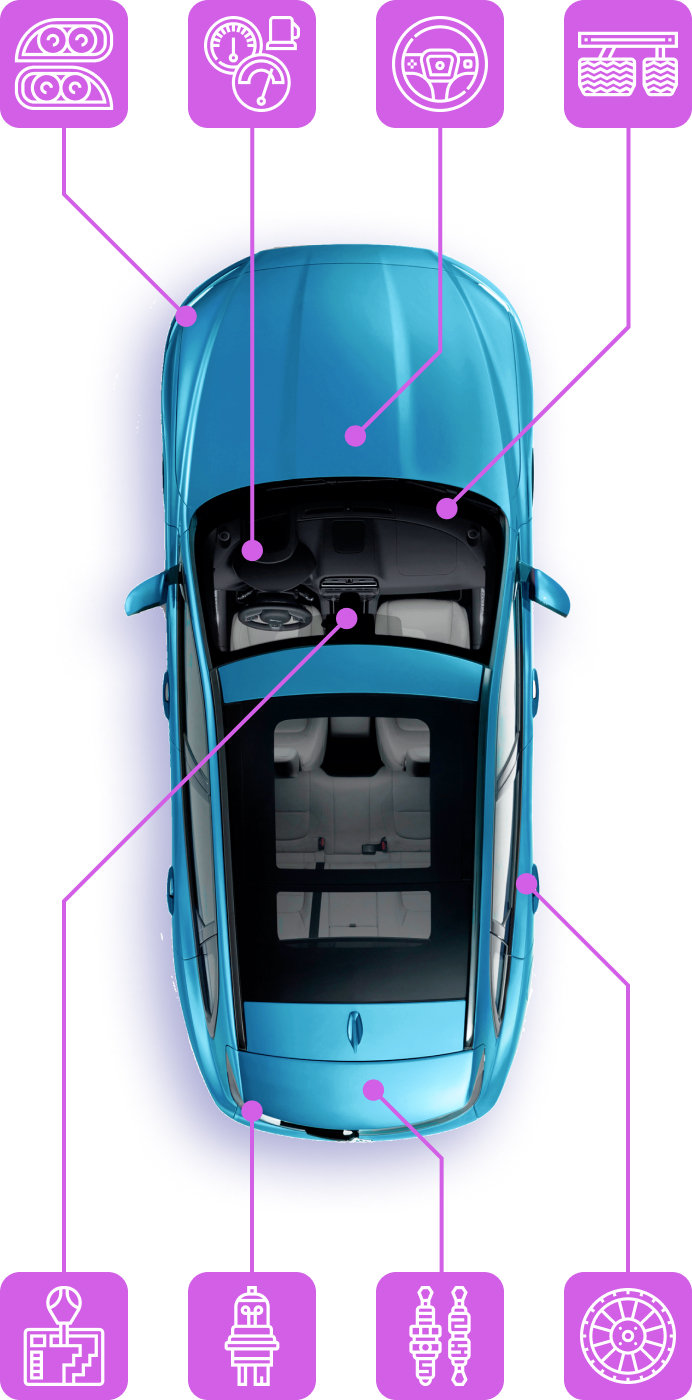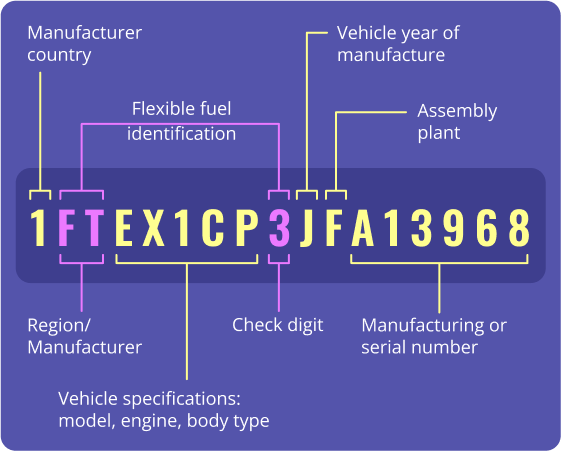Car VIN check Germany
Free for service users
Search by brand
Our advantages




Why to check the VIN number of the car with the decoder
VIN code is not just a set of letters and numbers. It is a universal vehicle identifier that hides the entire history of the car. Checking a car's VIN is necessary for several important reasons:
- Car maintenance history. The service history of the car allows you to find out how regularly and qualitatively it was taken care of by the previous owners. It can be used to determine whether scheduled maintenance was carried out, whether there were serious breakdowns or expensive repairs. Such information helps to assess the real technical condition of the car and avoid unpleasant surprises after purchase.
- Check technical characteristics. The real and declared configuration of the car can often differ, as the seller artificially inflates the cost of the car in this way. Decoder will show whether the car really corresponds to the description in terms of engine type, transmission, power and other parameters.
- Saving time and money. Instant access to the report allows you to make a buying decision right away. In most cases, the report is ready in less than a minute. And all this without resorting to intermediaries.
Contents of our VIN decoder report

- Car make and model
- Series and body type
- Drive type
- Transmission type
- Model code
- Engine code
- Date of manufacture by VIN
- Engine displacement
- Engine power
- Fuel type
- Ecological standard
- Equipment by VIN
- Machine colour
- Bumper material
- Presence of body protection elements
- Security systems
- Air conditioning and heating system
- Electric actuators and adjustments
- Number of USB ports
- Multimedia system
- VIN equipment check
- Wheel and tyre size
- Suspension type
- Spare wheel availability
- Parking sensors and cameras
- Tyre pressure sensors
- Start-stop system
- Type of lamps
- Presence of daytime running lights
- On-Board Diagnostics (OBD)
- Electrical architecture
BidCar's VIN report provides a complete dealer service history for your vehicle. The information included will help you learn all about the vehicle's condition and work performed. The report contains:
- All service orders including exact dates, mileage, list of work performed, parts used with catalogue numbers.
- Comments and recommendations from masters and diagnosticians.
- Information on major repairs - engines, gearboxes, bodywork.
- Data on whether the car was used as a taxi or scrapped abroad (e.g. in the USA).
- Information about chipping the car, if it was recorded by the dealer during an internal combustion engine software check.
- A full listing of work and spare parts with quantities and catalogue numbers.
- Technical manuals for mechanic and body repairs and electrical diagrams of the vehicle.
- Complete dealer documentation in a large PDF document that stays with you locally.
In addition, it is important to note that the data in the report is not obtained from free sources such as traffic police or FSSP, but directly from official dealers. The report is generated in just 1-5 minutes and saved on your device.
- Vehicle class and type
- Glass and mirror settings
- Type of steering
Frequently Asked Questions (FAQ)

Latest VIN reports
| Brand / Model | Date | VIN |
|---|---|---|
| Volvo XC90 T8 AWD RECHARGE GEARTRONIC, 2020 | 29/04/2020 | YV1LFBMUDL16XXXXX |
| Toyota yaris PC hybrid business my21 - | 08/03/2022 | YARKBAC34000XXXXX |
| Citroen C4 C4 BlueHDi 110ch S&S Live Pack Business | 11/01/2022 | VR7BBYHSAME0XXXXX |
| Mercedes-Benz 315 CDI Sprinter Extralang HA, 2021 | 15/03/2021 | W1V9076371P3XXXXX |
| Volvo V60 T6 recharge awd Inscription Exp, Drag, Voc, Auto | 25/11/2021 | YV1ZWBFVDN14XXXXX |
| Ford Transit CUSTOM 320 L2H1 LKW VA AUTM. Trend, 2020 | 12/02/2020 | WF0ZXXTTGZKPXXXXX |
Where the VIN number of the vehicle is located
The VIN code is present on almost every important part of the vehicle. In German cars, it is most often located in several places:
- Under the windscreen. On the driver's side, in the upper corner. This is the main place for visual inspection.
- Door pillar. In the driver's doorway, a sticker with the VIN code and additional technical information.
- The bonnet lid or engine compartment. Metal plate or engraving on the panel.
- On the engine block. Often embossed next to the engine number.
- In the boot or under the interior trim. Some models have duplicate labelling elements.
The factory marking must be intact, with no signs of tampering. Any damage to the code area is a reason for a detailed inspection.

Decoding VIN history of a car
The VIN is a 17-digit code unique to each vehicle. It encrypts production data, technical specifications and serial number. The structure of the code is as follows:
- WMI (1-3 characters): an indication of the manufacturer and country of assembly. For example, ‘WVW’ is a Volkswagen manufactured in Germany.
- VDS (4-9 characters): information includes body type, model, engine type, safety systems.
- Check digit (9th position): designed to check the other characters.
- VIS (10-17 symbols): information about the year of manufacture, manufacturer, serial number.
Thanks to the decoding of the VIN, you can understand whether the car was original equipment. This is especially important when buying cars with modified or ‘improved’ characteristics. For example, the request to check the Volkswagen VIN code for free allows you to verify the declared configuration with the factory data. In addition, to know the exact VIN is mandatory when ordering spare parts: details depend on the year of manufacture, engine modification, body platform.

Buying a car from Germany is a serious investment that requires maximum transparency. Especially when buying a used car. Checking a car by VIN code is an effective way to get full information about the vehicle in advance and avoid risks. The German market is considered to be one of the most stable and high-quality, but even here there are cars with altered history, hidden damage or forged documents. The VIN number allows you to identify such problems in advance.























































